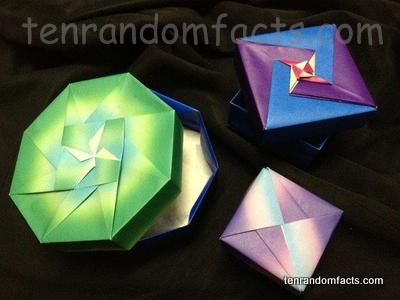Did you know that there is an art to folding paper? Well, it is called origami.
- Origami is the art of folding paper, generally without cutting or gluing, that is believed to have originally started in the first or second century AD, in China.
- Origami generally involves folding a square piece of paper into a two or three dimensional object, while the most common or well known folded object is a paper crane (bird) or ‘orizuru’.
- In the sixth century AD, origami was introduced to Japanese people, and it eventually became ingrained into the Japanese culture, so much so, that it has been, and is still strongly associated with Japan.
- Origami paper sizes typically range from 2.5 to 25 centimetre (1 to 10 inch) squares, although they can be larger, and the most common size is 15 cm (5.9 inches).
- Although folding paper in origami is typically performed by hand only on a smooth surface, tools including a scorer, embosser, paper clips and tweezers can be used for better folds or holds.
- Some origami models have moving mechanisms once interacted with, and designs include simple jumping frogs and flapping wings to complex models of a figure playing a paper instrument.
- ‘Origami’ comes from the Japanese words ‘ori’ and ‘kami’ meaning ‘fold’ and ‘paper’ respectively.
- The final design size of an origami model is dependent on the paper size; and a number of computer programs have been designed that can simulate the art of paper folding, and can also create designs.
- Origami has a strong link to mathematics, and can be seen used in practical solutions such as airbags in vehicles, and it has been a common subject of copyright issues, as designs have been often stolen and republished.
- Origami paper is available in a wide range of colours and patterns, that usually range between 55 to 90 gsm in weight, and the paper is often thin, allowing for ease of folding.
Bibliography:
History, n.d, Kid’s Web Japan, http://web-japan.org/kidsweb/virtual/origami/origami01.html
Origami, 2014, Wikipedia, http://en.wikipedia.org/wiki/Origami







where did u learn this origami…
Pretty cool I guess these facts are awesome
… it is kind of cool…
paper hadn’t been invented in the first/second century, it was invented in the 6th century
Paper was invented in China between the first and second century.
yeah I agree with super dog! Origami’s seem to be very interesting.